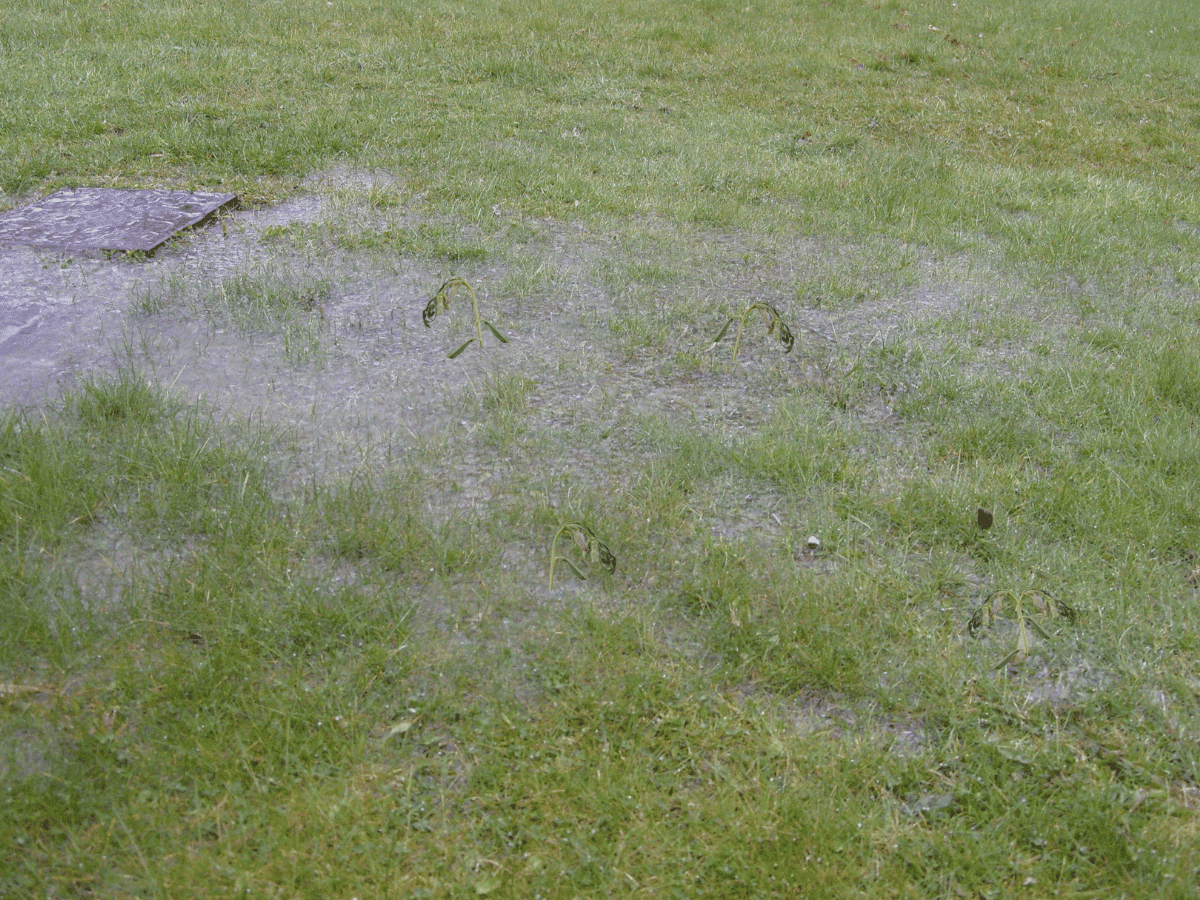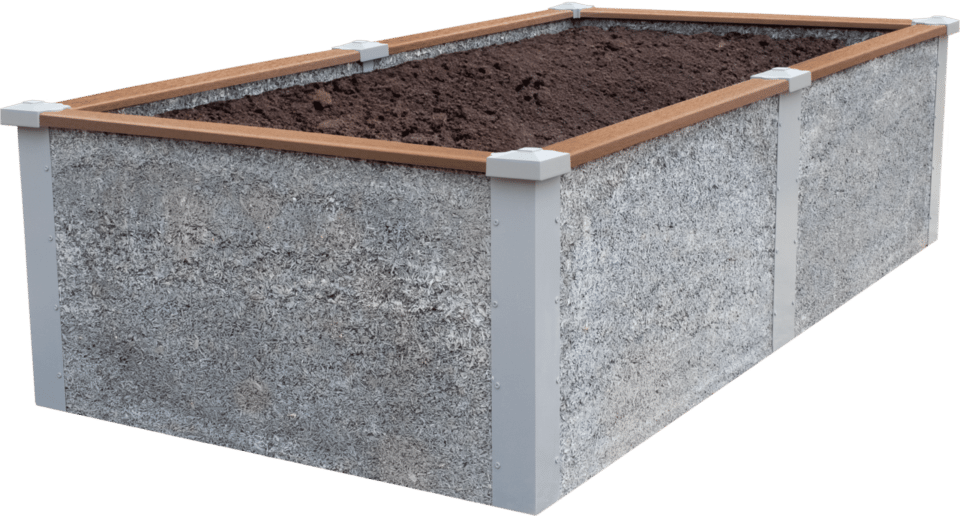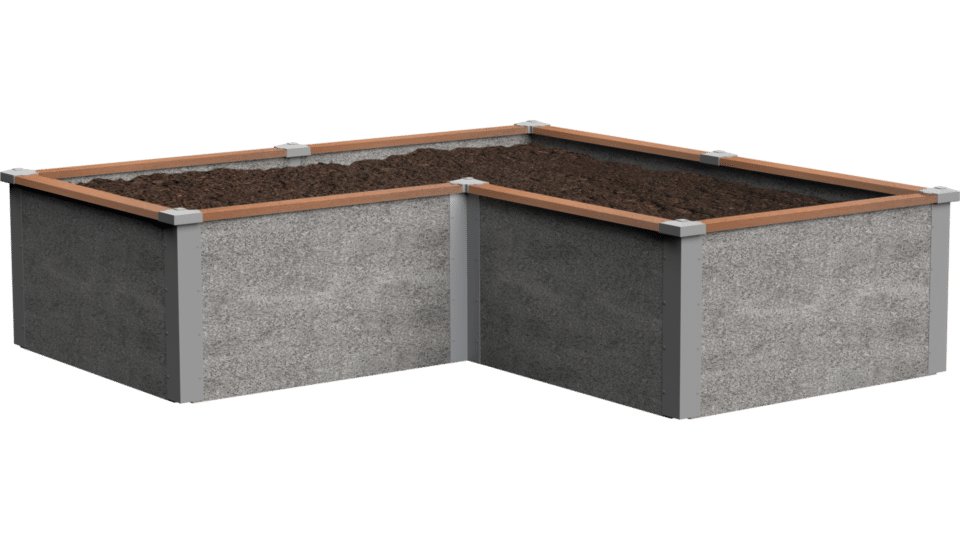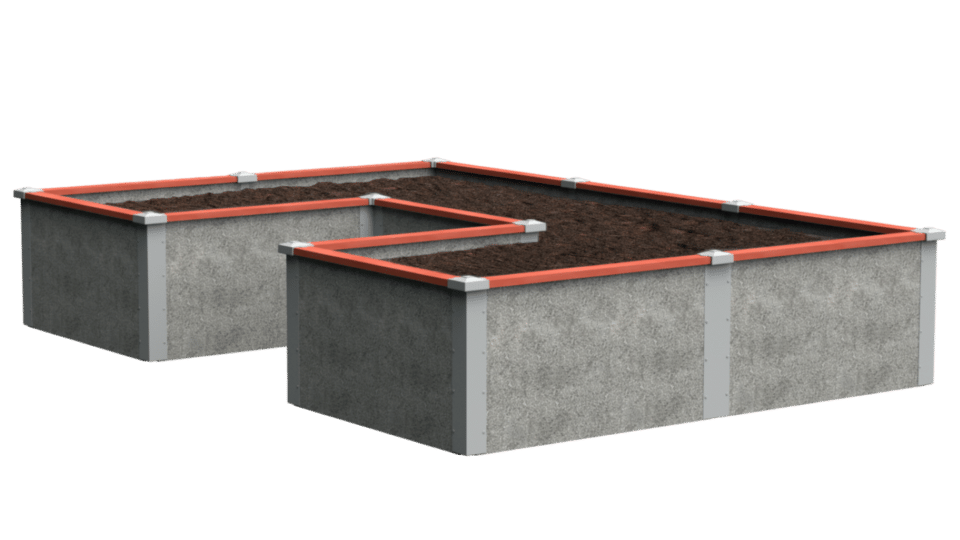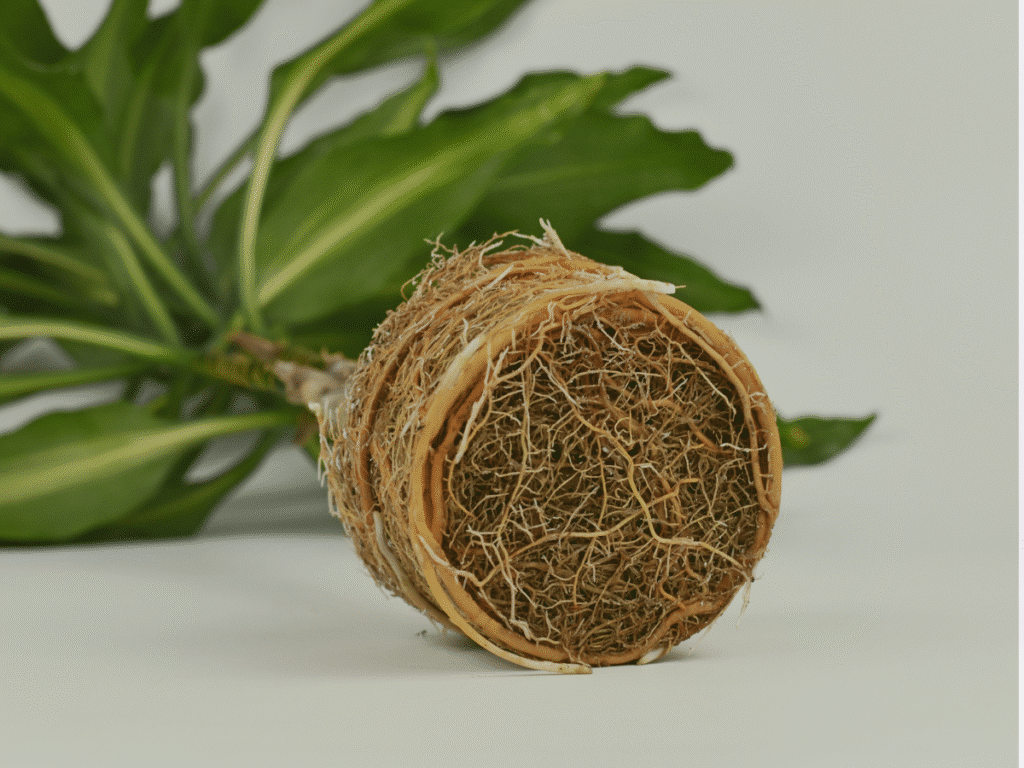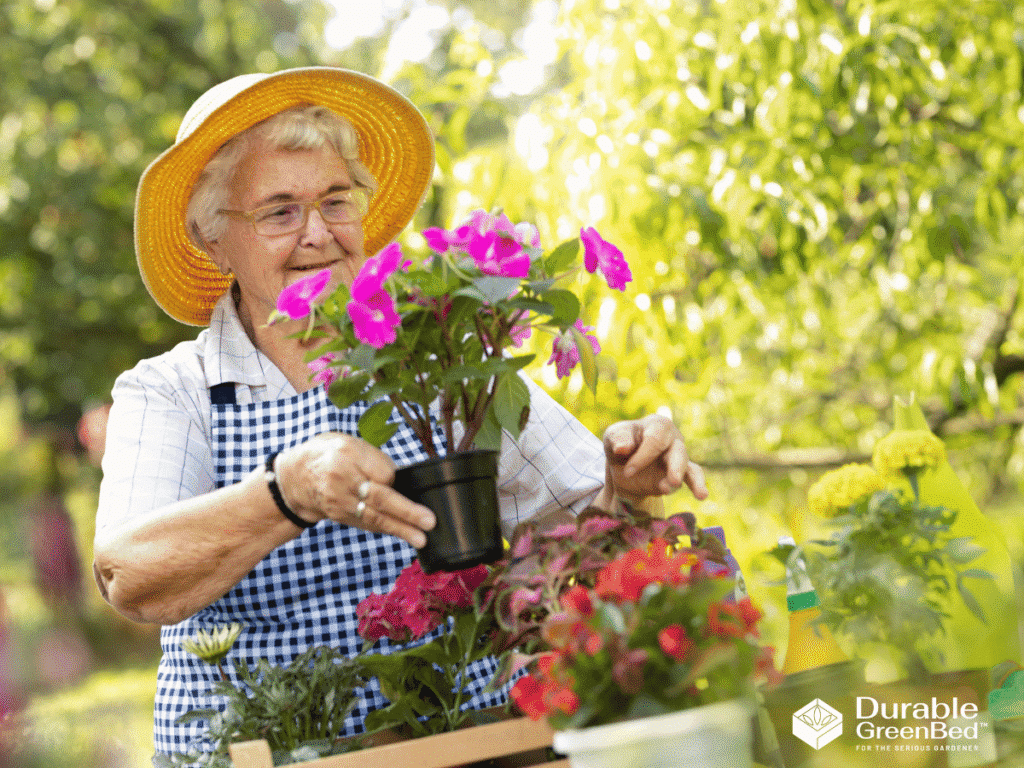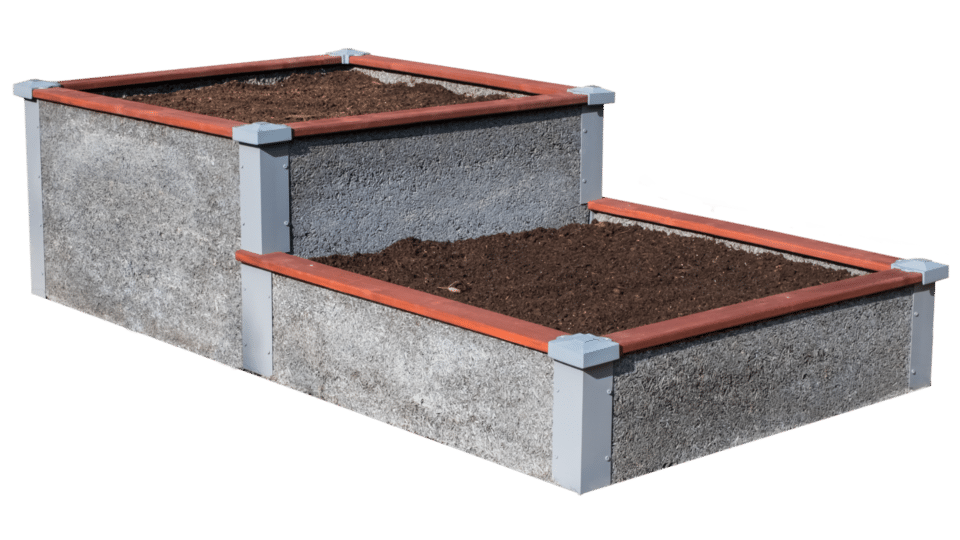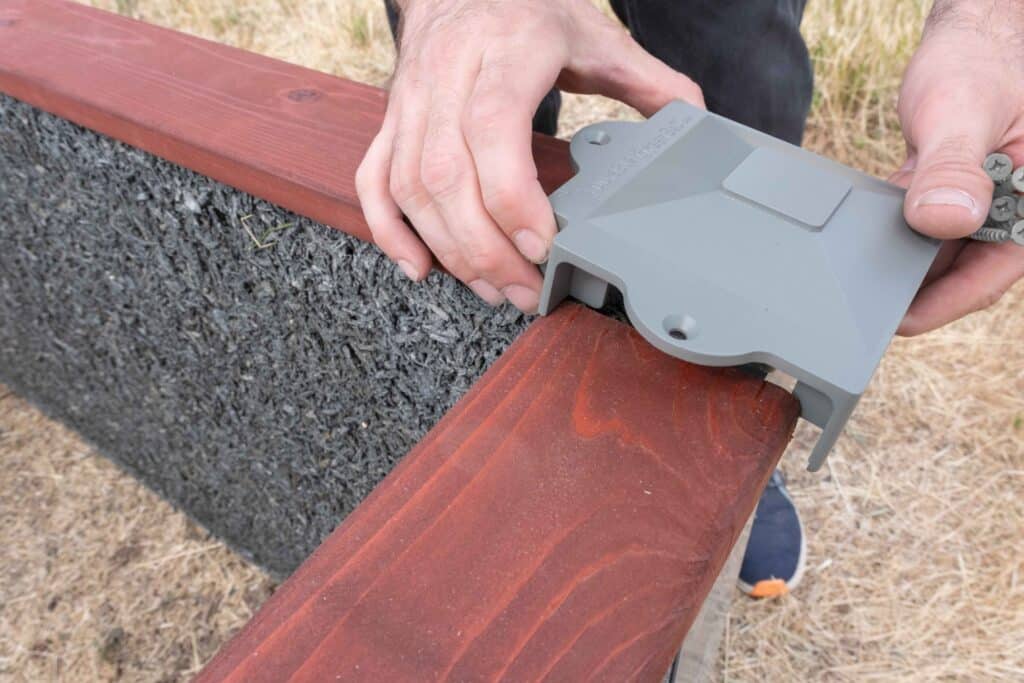
Waterlogged gardens are every gardener’s nightmare. One minute your plants are thriving, the next they’re drowning in soggy, oxygen-starved soil. If your garden looks more like a swamp than a sanctuary, don’t worry, you’re not alone, and there are solutions.
In this guide, we’ll cover what waterlogged soil is, how to spot waterlogged symptoms, how to fix waterlogged garden soil, and most importantly, how to prevent waterlogging in the garden using proven techniques. We’ll also explore how Durable GreenBed’s raised garden beds can help you take control of your soil health for the long term.
What Is Waterlogged Soil?
Waterlogged soil is ground that has become saturated with water to the point where it can no longer drain effectively. This typically occurs after heavy rainfall or poor drainage, and is more common in soils with a high clay content or those that are compacted. The biggest issue? A lack of oxygen. When water fills all the air pockets in the soil, plant roots can’t breathe, and they suffer. Waterlogging is most common in clay-heavy or compacted soils, or in areas where water has nowhere to go due to poor drainage or bad grading (inclines that cause water to pool in certain areas of the garden).
Waterlogged Symptoms
Identifying waterlogged soil early can help you save your plants. Here are common signs:
- Soil stays wet or muddy for days after rain
- Pools of standing water that don’t drain for hours or days
- Plants with yellowing, wilting, or drooping leaves
- Root rot: Plants with dark, mushy roots or stems
- Rotten smell from the soil (a sign of anaerobic conditions)
- Lack of growth, flowers, or fruit on plants
If these symptoms sound familiar, keep reading for what to do next.
How to Fix Waterlogged Garden Soil
Solving a waterlogging problem requires a combination of short-term emergency actions and long-term soil improvements. Here’s how to approach both.
What to Do If Your Garden Is Waterlogged
- Remove Standing Water
- Stop watering immediately
- Remove standing water using a bucket or dig shallow trenches to direct it away
- Avoid walking on wet soil, which causes compaction and makes drainage worse
- Move potted plants indoors or to sheltered areas
- Let the Soil Dry Out (Carefully)
- Avoid walking on or digging into waterlogged soil until it begins to dry. This prevents further compaction.
- Assess the Damage
- Check plants for root rot or yellowing leaves.
- Remove or prune damaged foliage.
If necessary, replant in drier areas or containers until the garden recovers.
How to Fix and Improve Garden Drainage
The key to fixing waterlogged soil is improving its structure and drainage capacity.
1. Break Up Compacted Soil
Once the soil begins to dry:
- Gently aerate the soil using a garden fork to introduce airflow.
- Use a spike or plug aerator to poke holes in the soil.
For lawns, aerate in dry periods during spring or summer for best results.
2. Improve Soil Structure with Organic Matter
Heavy soils (especially clay) retain water. To improve soil structures, mix in:
- Compost, well-rotted manure, or leaf mold into the soil to create air pockets and improve water flow.
- Coarse sand (not fine sand, which can make compaction worse)
- Gypsum to clay soils to help break up compact particles.
This improves texture, increases drainage, and promotes healthy microbial life.
3. Install a Drainage System
For persistent waterlogging, consider:
- French drains: Trenches with gravel and perforated pipes that redirect excess water.
- Soakaways: Underground pits filled with gravel to collect excess water
- Land drains: Perforated piping wrapped in geotextile membrane, surrounded by pea gravel (see Cotterill Civils’ guide)
- Dry wells: Gravel-filled pits that allow water to slowly soak into deeper soil layers.
These systems redirect water away from planting areas.
4. Mulch and Surface Treatments
- Use bark chippings, mulch, or wood shavings to prevent soil compaction and reduce surface runoff.
- Mulch also improves soil health over time as it decomposes.
5. Grow Water-Tolerant Plants
If certain spots in your garden are chronically wet, plant species like:
- Marsh marigold
- Japanese iris
- Cardinal flower
What to Do With a Waterlogged Garden
Protect Plants
- Support tall plants and clear away debris
- Avoid disturbing the soil until it’s workable (moist, not muddy)
Restore Soil & Plants
- Push mulch back from plant stems if displaced
- Re-cover any exposed roots with compost or light soil
- Prune damaged leaves and stems once dry
- Remove and replace any plants that don’t recover after a week
Watch for Pests & Disease
Wet gardens attract slugs, snails, and fungal diseases. Remove any hiding spots (like boards or stones) and monitor your plants closely.
How to Prevent Waterlogging in Garden Soil
Prevention is always easier than a cure. Here’s how to improve garden drainage and build a more resilient garden.
1. Improve Garden Layout:
- Regrade your garden to ensure it slopes away from your house and planting areas.
- Redirect downspouts and gutters to prevent water from being dumped into your beds.
2. Avoid Compaction
- Don’t walk on garden beds; instead, create defined paths
- Avoid tilling excessively, which breaks soil into fine particles that compact easily
3. Use Raised Garden Beds
One of the most effective ways to prevent waterlogging is by growing in raised garden beds. Durable GreenBed’s raised beds offer excellent drainage and protection from waterlogging.
Why Durable GreenBeds Are Ideal for Preventing Waterlogging
When it comes to waterlogged soil, Durable GreenBed offers a powerful solution. Their raised garden beds are designed with drainage in mind. Here’s why they stand out:
- Porous wall design: The unique composite material of Durable GreenBeds allows excess moisture to drain through the walls, allowing for proper airflow and preventing water from pooling.
- Drainable but not moisture-wicking: Unlike wooden beds that pull water from the soil, Durable GreenBeds maintain the right moisture balance for healthy roots.
- Made from recycled wood fibers and cement, they’re rot-resistant, long-lasting, and promote healthy root development
- Custom soil mix control: You can fill your Durable GreenBed with a fast-draining soil mix tailored to your climate and plant needs.
For areas with chronic drainage issues, switching to Durable GreenBeds can be a game-changer. Whether you’re growing vegetables, herbs, or flowers, Durable GreenBed helps you take back control from soggy ground and root rot.
4. Add Mulch and Cover Crops
- Apply organic mulch at the end of each season to maintain soil structure
- Use cover crops or green manure to protect bare soil and help absorb moisture during wet months
5. Elevate and Contour Your Garden
- Slightly mound planting areas to keep roots above soggy zones
- Dig shallow swales or trenches to redirect surface water
Brief Overview of How to Fix Waterlogged Garden Soil in Your Garden
Quick Recap:
- Identify waterlogging symptoms early.
- Improve soil with compost and aeration.
- Redirect water with French drains or surface grading.
- Use raised beds, such as the Durable GreenBed, for long-term control.
Waterlogged gardens can be frustrating, but with the right approach, you can revive your soil, protect your plants, and even prevent future flooding. From adding organic matter to installing proper drainage, and especially by using raised beds like Durable GreenBed, you can turn a saturated mess into a thriving, well-drained haven.
Your garden doesn’t have to be held hostage by waterlogging. With these tips, you’re well on your way to creating a garden that drains beautifully and grows even better.
Looking to upgrade your garden?
Check out Durable GreenBed for long-lasting, eco-friendly raised beds that solve drainage issues and elevate your garden design.
Happy gardening!
There's Nothing Like Durable GreenBeds
It's the Walls!™
- Breathable
- Well Draining
- Higher Yields
- Prevents Slugs and Pests
- Non-Toxic
- 20-25 Year Lifespan
Shop Durable GreenBed Kits
-
Rectangular Raised Garden Bed Kit
$471.00 – $2,085.00Price range: $471.00 through $2,085.00 Select options This product has multiple variants. The options may be chosen on the product page -
L-Shaped Raised Garden Bed Kit
$786.00 – $1,305.00Price range: $786.00 through $1,305.00 Select options This product has multiple variants. The options may be chosen on the product page -
U-Shaped Raised Garden Bed Kit
$1,199.00 – $2,446.00Price range: $1,199.00 through $2,446.00 Select options This product has multiple variants. The options may be chosen on the product page
Shop Durable GreenBed Raised Garden Bed kits
-
Rectangular Raised Garden Bed Kit
$471.00 – $2,085.00Price range: $471.00 through $2,085.00 Select options This product has multiple variants. The options may be chosen on the product page -
L-Shaped Raised Garden Bed Kit
$786.00 – $1,305.00Price range: $786.00 through $1,305.00 Select options This product has multiple variants. The options may be chosen on the product page -
4’x8’ Stepped Raised Garden Bed Kit
$865.00 – $1,073.00Price range: $865.00 through $1,073.00 Select options This product has multiple variants. The options may be chosen on the product page -
U-Shaped Raised Garden Bed Kit
$1,199.00 – $2,446.00Price range: $1,199.00 through $2,446.00 Select options This product has multiple variants. The options may be chosen on the product page

